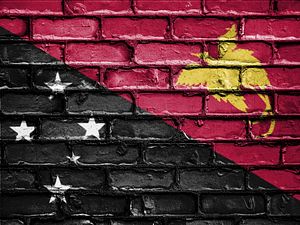Within Australia, the national security community is abuzz with the prospect of the sale of Papua New Guinea’s largest telecommunications company, Digicel. The Australian government is currently under significant lobbying pressure to provide support to private bidders for the sale of the company. Digicel, led by Denis O’Brien, has reportedly been courted by bidders from mainland China.
As a result, there is a scramble to buy the company underway. Digicel is demanding US$2 billion, according to the Australian Financial Review. This would value the company higher than massive telecommunications companies in Australia. Assessment by the AFR shows that the asking price is hard to justify, and the Australian government is clearly being asked to pay a geopolitical premium for the institution.
Does this make it a wise deal? The current Digicel infrastructure is for the most part obsolete and dependent on large KA band O3B landing stations. These landing stations are expensive as they track low earth orbit satellites, which do not sit in a geosynchronous orbit. This means the landing equipment needs to track satellites in motion across the sky. This makes the equipment more complex than geosynchronous systems but allows for lower latency connectivity than satellites further out but steady in the sky.
The data from these stations is then moved across Papua New Guinea using microwave tower backhaul. These towers are incredibly labor intensive, require constant independent sources of fuel, and traverse some of the toughest terrain in the region. Much of the network operated by Digicel in PNG operates across the Owen Stanley Ranges, one of the harshest environments to traverse for telecommunications.
Going forward, the telecommunications networks in Papua New Guinea are moving to coastal fed fiber optic cables. While the Australian government supplanted Huawei for the building of the main cable into Port Moresby, the government of Papua New Guinea still chose Huawei for much of the coastal services.
Regardless of vendor trust and competition, this external coastal system will render many of the landing stations operated by Digicel cost uncompetitive. O3B data is significantly more expensive than that provided by competitive fiber, although negotiations around the price point to consumers by DataCo, the state owned telecommunications reseller in Papua New Guinea, remain ongoing. This will render the costs of maintaining internal microwave links prohibitive. Digicel still holds significant debt from those assets and faces the complete restructure of its technical network to be competitive.
Digicel also has significant reputation issues within the country. There is an entire cabinet of documents from government litigation against Digicel. Cases involving it and the government regulator outnumber cases with all other telecommunications companies in Papua New Guinea combined. In most countries this wouldn’t be an issue. But Digicel requires access to the Coral Sea cable to be able to access cheaper data and remain competitive. Their access to this infrastructure is not a given based on their past acrimonious relationships – access to those systems is determined by the state as represented by DataCo. It also gives government the opportunity to completely switch off Digicel’s access to fiber data should the relationship deteriorate, as it regularly does.
The future state of telecommunications infrastructure in Papua New Guinea will emerge from a mesh network of coastal fiber optics and large scale KA band direct link geosynchronous satellite coverage into interior areas. A hub and spoke model of KA O3B within the interior of the country could also be built to support this. However, Digicel’s current network does not operate in this manner at the moment, even if it operates similar infrastructure for its trunking.
With regards to the national security considerations, the risk of espionage and telecommunications interception is real and high. Digicel is currently heavily utilizing manufactured hardware out of China. It is the single largest user of Huawei technology in Papua New Guinea. There is no prospect of this changing easily even post-acquisition, as the existing technology would have to be completely replaced at great expense. These expenses would need to be incurred along with existing debt currently held by the country.
Some of the risk of interception is mitigated by the fact that the majority of the country, especially those in sensitive roles, use encrypted messaging systems. This makes telecommunications interception of content very difficult, even if target tracking would be trivial.
As a result, the purchaser of Digicel faces the prospect of urgently needing to rebuild the company’s infrastructure to remain competitive. Its most valuable asset, its customer base, would need to be retained throughout. This would likely mean that whoever buys the company would face rebuilding the technology while fighting a price war, using noncompetitive exiting infrastructure that carries significant debt.
Accordingly, Digicel faces an uphill battle to maintain its position. Should the Australian government commit to buying the entity there is nothing to stop China Mobile or another competitor from making independent market entry post-acquisition. They would then face a competitor with no debt, building new infrastructure fresh, without the brand issues associated with Digicel. The Australian government would be better placed to focus its efforts on reforming the state-owned enterprise space in Papua New Guinea to create a more even market while working with the government of Papua New Guinea to mitigate technological risks.
Robert Potter is a fellow at the Centre for Rule-Making Strategies in Tokyo and the CEO of Internet 2.0. Prior to this he was a ministerial advisor in the Australian Government. He was also a visiting scholar at Columbia University.
John Young is an executive with Papua New Guinean telecommunications company, Astrolab.































